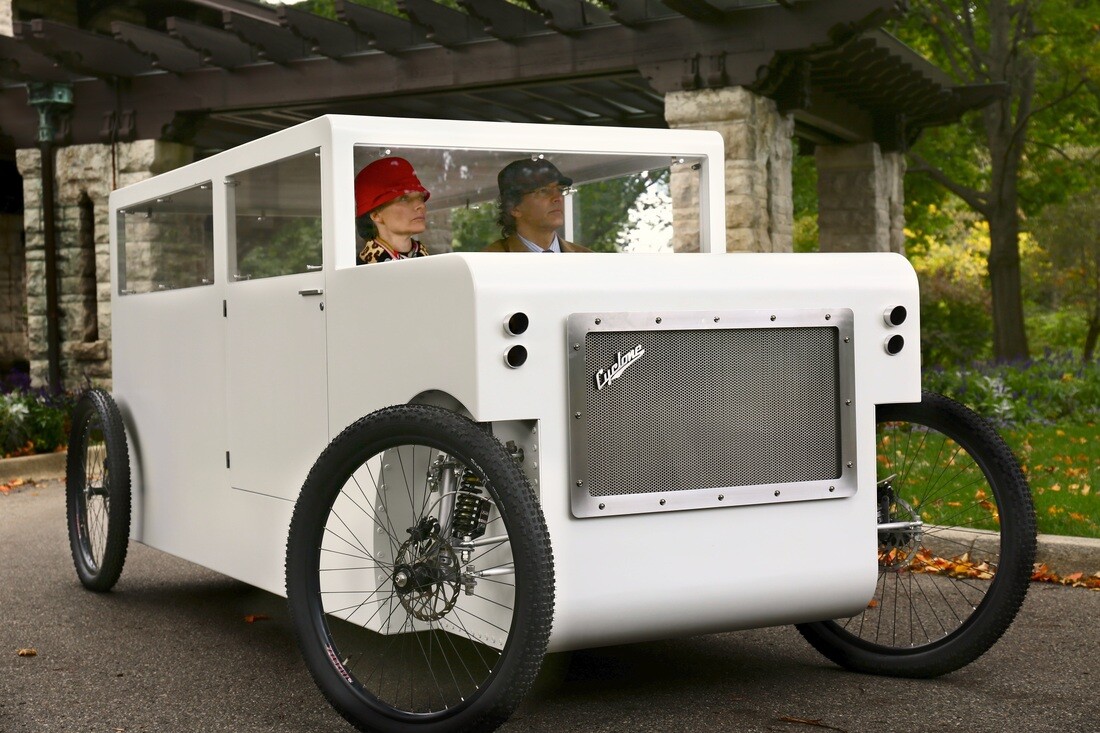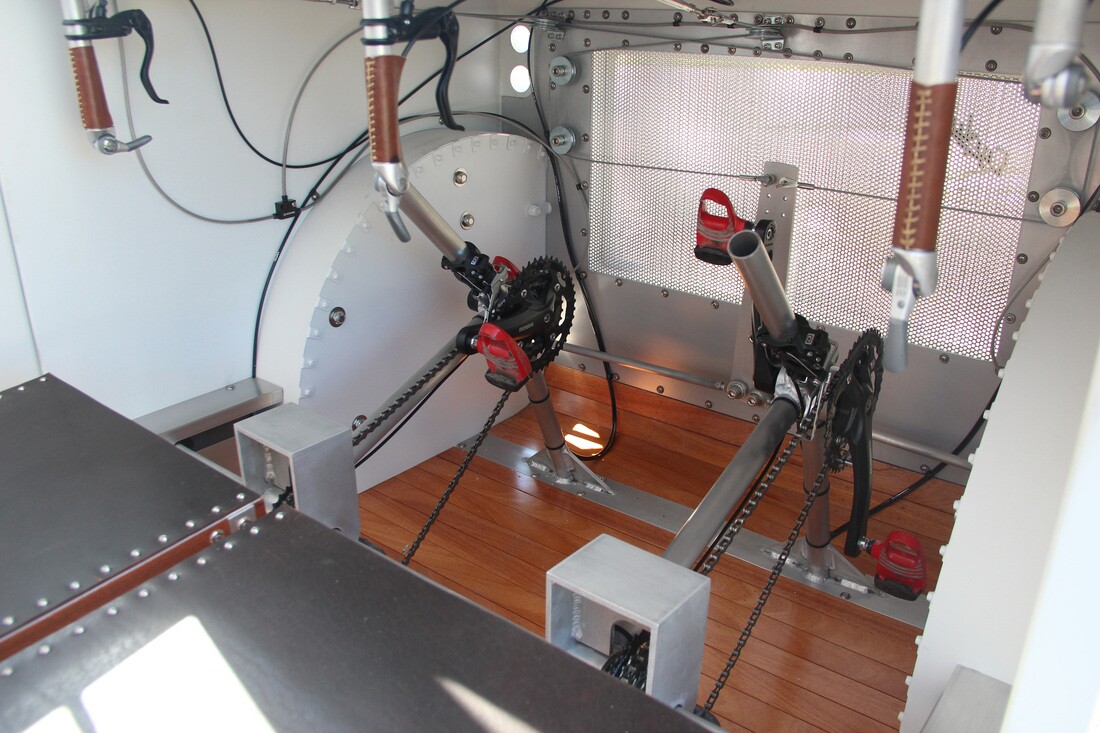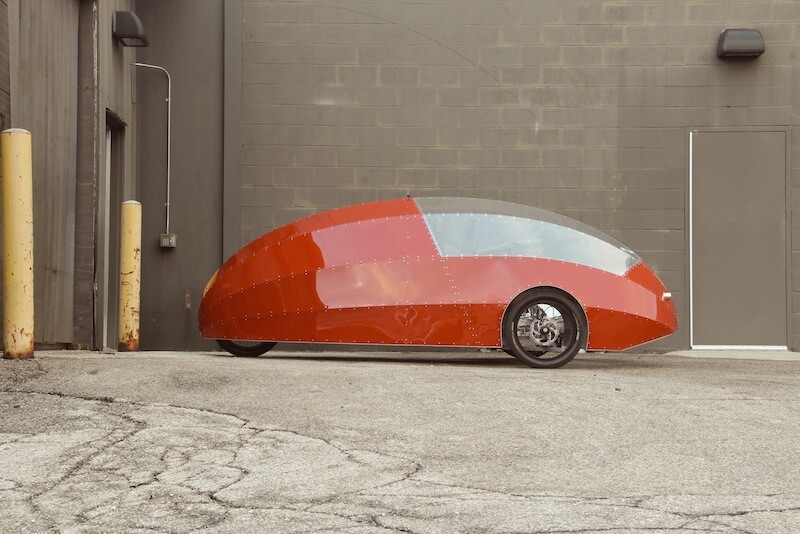The team behind The Future People, who brought us the FireFly back in 2013, has recently completed two more human-powered velomobiles which where on display during the 2015 Detroit NAIAS Auto Show. Dubbed Zeppelin and Cyclone, both prototypes push the boundaries of the common human-powered vehicle (HPV) with designs that look to the past and the future.
"Since I was a child I have often found that the things I wanted did not exist," Future People's head designer Cameron Van Dyke tells Gizmag. "That put me in a position to somehow figure out a way to build it myself. When it comes to my transportation choices I have been having a hard time reconciling the chasm between the bicycle option and the car option. The bike is generally not quite large or fast enough for what I need to do, but the car is way too much. This project attempts to create an option that exists between those two extremes."

In order to create the “future cycles” Van Dyke drew upon his background in furniture design and fabrication while also adopting boat building and traditional bike assembly techniques. The result saw the creation of two distinct prototypes that feature a lightweight aluminum exterior shell, seating for two front riders and rear storage space. Both designs were created in CAD software and CNC lasers were used to cut many of the custom aluminum or steel parts.
"The design methodology was very familiar to me," says Van Dyke. "The challenging part was that I needed to learn how the systems of a vehicle work – particularly steering, suspension, and braking – and how to integrate those systems with a bicycle drive-train. Through many iterations I choose an arrangement that I felt was the most beautiful and simple way possible."

The vintage-inspired Cyclone model features an elegant white exterior shell, mahogany interior flooring, leather seats and a four wheel chassis. Both front seat occupants power the vehicle by pedaling and there are two additional passenger seats located in the back.
In contrast, the futuristic looking Zeppelin features an aluminum and polycarbonate exterior, 750 watt electric rear motor and a traditional three wheel velomobile base structure. The model can be powered by the tandem riders or assisted with the electric motor which can reach a maximum speed of 25 mph (40 km/h).
The lightweight model weighs in at 270 lbs (123 kg) and can drive for 20 miles (32 km) on a full charge. According to Van Dyke, in the most parts of the United States the Zeppelin is legally considered a bicycle and can thus be driven without a license, insurance or registration.

Unfortunately the Future People's concept vehicles are not on the market, however Van Dyke did reveal to Gizmag that he was interested in making the designs open source.
"The open source model is one that definitely interests us as a way to share and spread the message. It would be a powerful message to the auto industry if many of us begin to build our own cars. At the moment we are continuing to refine these concepts on our own and decide where to go with idea next. I do hope that others are inspired to try their own experimentation with vehicle alternatives."
See Future People's Cyclone and Zeppelin in full action in the videos below.
Source: The Future People via Designboom























